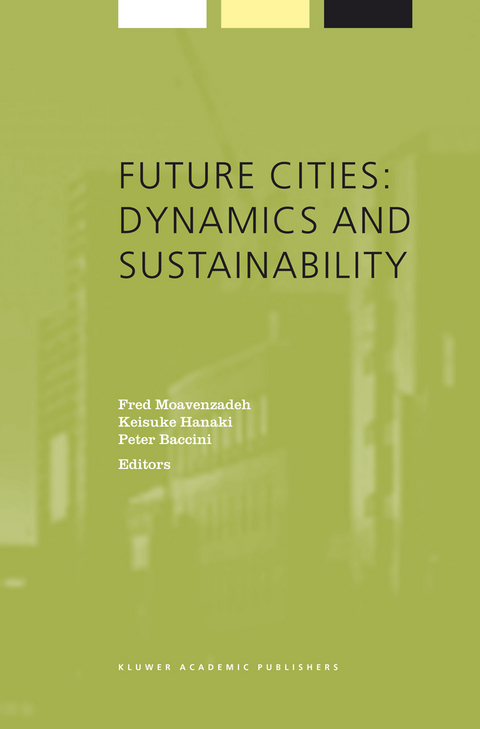
Future Cities: Dynamics and Sustainability
Springer-Verlag New York Inc.
978-1-4020-0541-1 (ISBN)
CITIES: CHALLENGES AND OPPORTUNITIES FOR SUSTAINABILITY BRANTLEY LIDDLE AND FRED MOAVENZADEH OR at least 4000 years, cities have been centers of cultural, social, technological Fand economic innovation, inventions and their application, and political power. Only in the last 200 years, the industrial era, have urban areas grown so rapidly, and their populations increased so dramatically that their impacts on the natural environ- ment are being felt beyond their immediate geographic surroundings. As the 21" cen- tury dawns, megacities-great and far-reaching concentrations of power and influ- ence-have become centers of the phenomena of globalization and information ex- change. These concentrations of people and activity are placing stress on the natural environment so great that it is beginning to have extensive regional, and even global impacts. However, asconcentrations ofpower-political, economic, andintellectual- these great urban centers share with the ancestral cities of past millennia the resources to consciously shape the future.
The management of these megacities (those having populations of over eight million) in their current formative stages so taxing to natural systems,paradoxicallypresents theopportunity torestoresustainableregional and global environments. Environmental problems consequent to urban growth have two sources: pov- erty and affluence. These two conditions often coexist in dramatic contrast within the same city, particularly in developing countries. In terms of environmental impact, poverty-based problems tend to have local effects, while affluence-based problems usually have transboundary and/or global effects.
Introduction: Cities: Challenges and Opportunities for Sustainability.- I. Resource Management on a Regional Scale.- 1. Restructuring Urban Systems.- 2. Scenarios for the Transition to a Second Solar Society: Case Study of a Swiss Lowland Region.- 3. Sustainable Water Management.- II. Urban Activities: Local and Global Impacts.- 4. Brook Revitalization in Zurich: A Multisystems Analysis of Sustainable Development.- 5. Environmental Loading of Resource and Heat Recovery.- 6. Towards Sustainable Urban Transport: Finding Synergies between Lowering Local and Global Impacts.- 7. The Urban Heat Environment and Urban Sustainability.- 8. “Green” Buildings: Private and Public Gains.- III. Developing and Developed Countries: Challenges and Cooperation.- 9. The Sustainability Challenge for Climate Change: Balancing Inter- and Intragenerational Equity.- 10. Megacities and Global Accords.- 11. Research in Partnership with Developing Countries: Application of the Method of Material Flux Analysis in Tunja, Colombia.
| Erscheint lt. Verlag | 30.4.2002 |
|---|---|
| Reihe/Serie | Alliance for Global Sustainability Bookseries ; 1 |
| Zusatzinfo | 1 Illustrations, color; 48 Illustrations, black and white; VIII, 240 p. 49 illus., 1 illus. in color. |
| Verlagsort | New York, NY |
| Sprache | englisch |
| Maße | 160 x 240 mm |
| Themenwelt | Naturwissenschaften ► Biologie ► Ökologie / Naturschutz |
| Naturwissenschaften ► Geowissenschaften ► Geologie | |
| Naturwissenschaften ► Geowissenschaften ► Meteorologie / Klimatologie | |
| ISBN-10 | 1-4020-0541-5 / 1402005415 |
| ISBN-13 | 978-1-4020-0541-1 / 9781402005411 |
| Zustand | Neuware |
| Haben Sie eine Frage zum Produkt? |
aus dem Bereich


